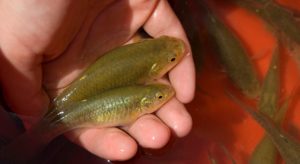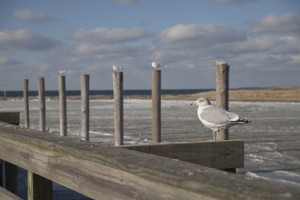WOODS HOLE – Evolution is working under pressure to rescue some coastal fish from a lethal, human-altered environment.
Now, a new study has revealed the complex genetic basis for the Atlantic killifish’s remarkable resilience.
The new findings, published in the journal Science, build on decades of research into the killifish’s ability to survive industrial contamination.
WHOI collaborated on the new multi-institutional study, which was led by the University of California, Davis.
While environmental change is outpacing the rate of evolution for many other species, killifish living in four polluted East Coast estuaries turn out to be remarkably resilient.
These fish have adapted to survive levels of toxic industrial pollutants that would normally kill them, tolerating concentrations up to 8,000 times higher than sensitive fish.
Although killifish are not commercially valuable, they are an important food for other species and an indicator of environmental degradation.
WHOI biologists Mark Hahn and Sibel Karchner have been studying PCB-resistant killifish in New Bedford Harbor since 1995 as part of the Superfund Research Program, in collaboration with other WHOI colleagues and with researchers from the U.S. Environmental Protection Agency’s Atlantic Ecology Division in Rhode Island.
The new findings suggest that the killifish’s genetic diversity makes them unusually well-positioned to quickly adapt and survive in radically altered habitats.

























